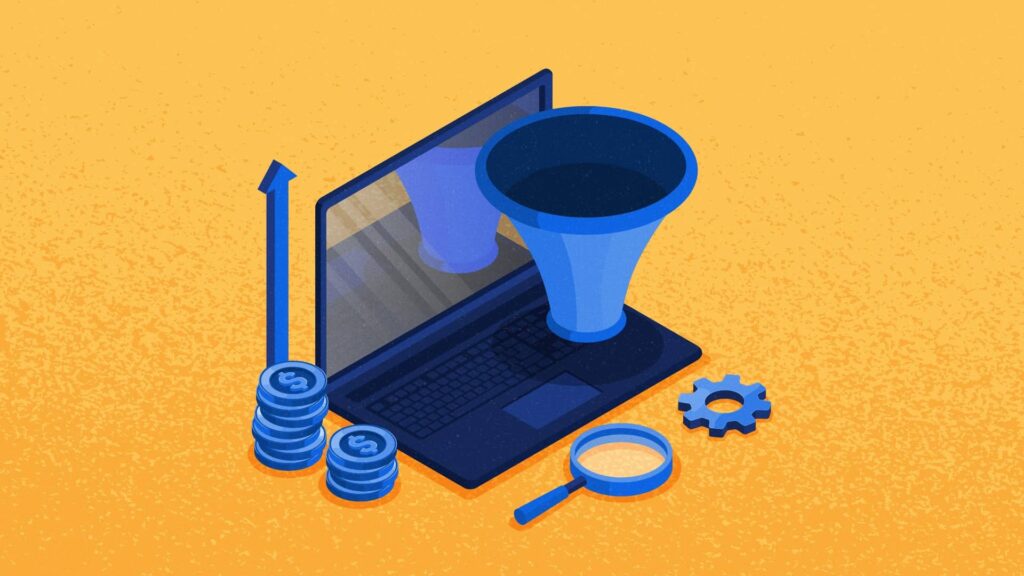So, customers stumble upon your online store and immediately whip out their credit cards, eager to buy everything in sight. That’s how it should work, right? Right?
Well, in reality, the path to purchase is rarely so straightforward. Customers often require dozens of touchpoints and interactions before they’re ready to convert. The better you understand the different stages of the eCommerce funnel and the more thoroughly you optimize each step, the more you can increase your store’s conversion rates and drive more sales.
In this post, we’re discussing the stages of the eCommerce funnel, including a couple of real examples, and what to do at each of those stages to maximize the impact.
Conversion Funnels Now and Then
First, a bit of background. The idea of a marketing funnel (or sales funnel, or conversion funnel – it’s all the same) emerged in the beginning of the XX century, originally proposed by William Townsend in his book “Bond Salesmanship.”
He called it a funnel because of its cone shape, which represents the typical customer journey — wide at the top as you attract a large number of potential customers and narrow down to a small number of actual conversions as they move through the different stages of the buying process.
In the good old days, customers progressed through the funnel stage by stage, directly from the top to the bottom. That was because in the good old days they didn’t have the ubiquitous Internet, which changed everything. Nowadays, customers can experience the stages of the funnel in a random order or even skip some of the stages.
So, why don’t we call it a sales labyrinth now? Well, because we could still use the idea of the funnel so that we know where we want to direct customers at each stage. Even if they choose to go in a different direction, we need to provide them with a clear way to the end goal without any obstacles.
Note: Your conversion rate depends on what you sell, and some sectors see more conversions than others for various reasons. Here’s the benchmark conversion rate by industry from Statista:

Source: Statista
Why You Need a Defined eCommerce Conversion Funnel
A defined funnel goes beyond simply acknowledging the steps of the customer journey. It’s a map of their experiences on your website that guides them through the process and nurtures them until they are ready to buy.
This structured approach allows you to:
1. Identify Drop-off Points and Eliminate Friction
Customers can (and often do) jump ship anytime for various reasons. Some of these reasons don’t have anything to do with you and your products, others do – and you can fix them. One of the advantages of a formal conversion funnel is that it helps pinpoint exactly where customers are dropping off, whether it’s during product research, at checkout, or somewhere in between.
With a tool like Mouseflow, you not only see where customers dropped off, but you also see why they did so:
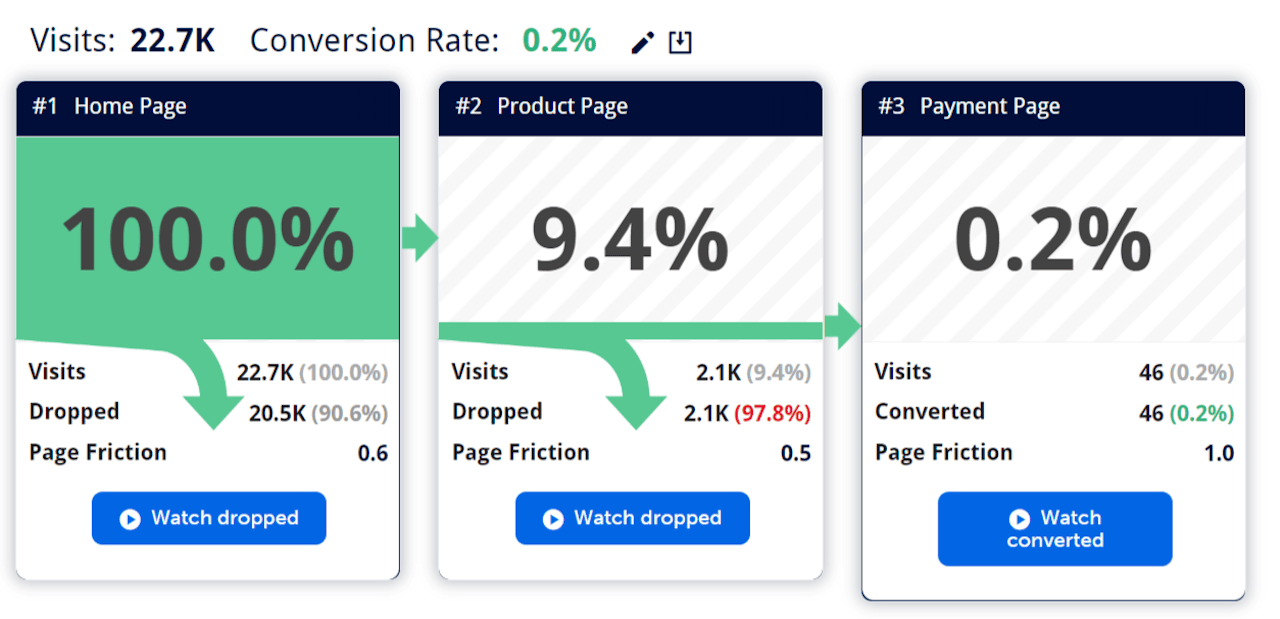
Mouseflow records visitors’ sessions and lets you watch recordings where visitors left the funnel at any particular point. If a user experienced a friction event like clicking an unclickable button, Mouseflow will highlight that and pinpoint the exact moment when it happened. This provides more useful insights and helps you make targeted improvements to remove friction and keep more visitors moving toward conversion.
2. Make Data-Driven Decisions
If you don’t have a structured funnel, you likely lack data. There’s no process, so there’s not much to track and analyze, leaving you without data to make informed decisions.
A structured funnel requires you to track key performance indicators (KPIs) at each stage to identify areas for optimization and test new tactics.
This will help you move beyond guesswork and refine your funnel over time to keep up with evolving customer behaviors and preferences.
3. Tailor Communication
Customers need different things at the various stages they’re in. At first, they may just need general brand awareness and education. However, as they move down the funnel, they’ll require more detailed product information and social proof to build trust.
A defined conversion funnel means you understand these evolving needs and can tailor your messaging, content, and user experience to provide the right information at the right time.
According to a report from McKinsey,
- 76% of consumers are more likely to consider purchasing from brands that have a personalized approach.
- 78% are more likely to make repeated purchases from companies that have a personalized approach.
- 78% are more likely to refer friends and family to brands that have a personalized approach..
This shows how personalization influences buying behavior, and having a funnel helps you personalize your interactions with prospects at each stage.
Stages of the eCommerce Conversion Funnel
The eCommerce sales funnel consists of five stages: awareness, interest, consideration, purchase, and post-purchase. Each stage represents a critical step in the customer journey, and it’s important to understand what each one entails and how to optimize it.
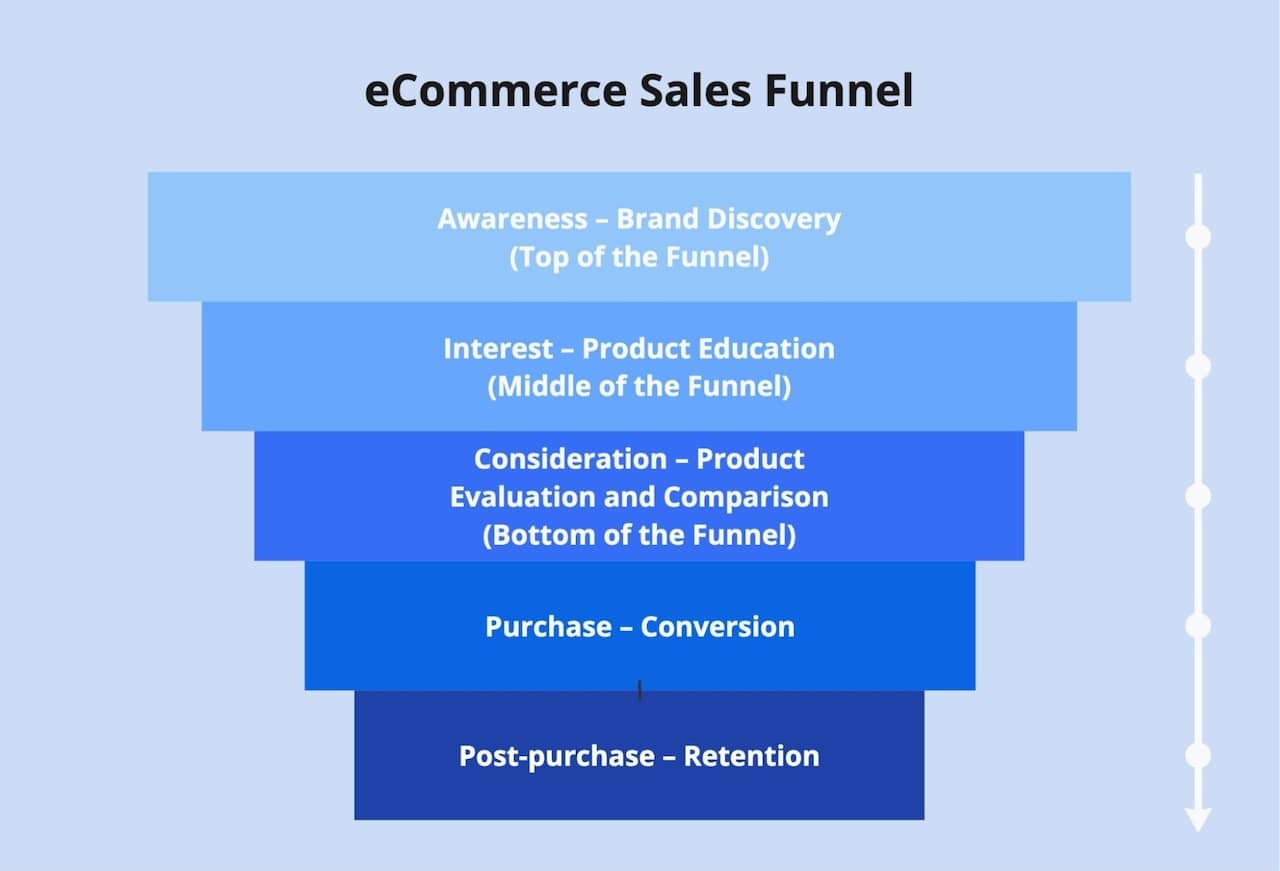
Awareness
This stage sits at the top of the eCommerce conversion funnel. Here, potential customers might be unaware of your brand or the product category you offer. So, it’s about brand discovery. Your goal here is to spark their interest and introduce them to your brand/product.
What To Do at This Stage
How do you get people’s attention? Usually it’s done with creative ads, influencer marketing and content marketing.. Craft informative, top-of-the-funnel (TOFU) content to educate your target audience, and answer their questions – whether it’s about problems they may have or something they are interested in.
For example, say you sell outdoor gear and apparel. You can create a TOFU blog post or a video on the topic of “Top 10 breathtaking hikes you need to experience this year,” where you showcase the beauty of exploring the outdoors. No selling your product at this stage, perhaps not even mentioning it. But a sentence or two about needing a good pair of hiking shoes and a backpack to be comfortable would fit perfectly at this stage.
Then, optimize your content (and the entire website) for search engines so that your brand will appear when potential customers research relevant topics or products. It’s much easier said than done, we know, but it’s totally necessary.
Social media is another great place to spread awareness. Research the platforms your target audience frequents, and establish a strong presence there by posting and engaging with your followers.
If you have a bigger budget, consider advertising and influencer marketing. They are a great way to reach a wider audience and raise brand awareness. The former involves advertising your brand on Google (PPC), social media, or even offline channels like billboards. The latter is about partnering with relevant industry influencers, experts, or social media personalities to leverage their established audiences and credibility.
KPIs to Track
At this stage, the KPIs you track depend on your awareness strategy. If you’re focused on creating SEO blog posts, track your website traffic and email list growth (if you’re sending people to subscribe to your newsletter from your content).
For advertising, monitor reach, impressions, and Click-Through Rate (CTR). And for referral or influencer marketing, look out for engagement and referral traffic.
Interest
Now, you’ve gotten the attention of potential customers. They’ve become aware of your brand and maybe even of what you sell. They’re starting to show interest but haven’t necessarily committed to buying anything yet. Your goal at this stage is to nurture their interest and keep them engaged. How do you do that?
What To Do at This Stage
Some effective tactics to consider at this stage include:
- Email marketing: While about 96% of visitors who land on your website are not ready to buy, they are often willing to share their contact information with you if you offer something that is of interest to them. So, take advantage of this and collect their emails via a sign-up form or pop-up on your website. Then, launch an email marketing campaign, starting with a welcome email (very important), to nurture them. According to a recent Klaviyo report, a welcome series is the second-highest converting flow overall (with an average placed order rate of 2.32%). During this campaign, share tips, links to your articles, product tutorials, or special offers relevant to their interests. And, of course, discounts can be a great motivator to jump to the next stage, so including them in the emails makes all the sense.
- Content marketing: Write middle-of-the-funnel (MOFU) SEO blog posts or create videos that dive deeper into product features, benefits, and use cases. If we continue with our outdoor gear brand example from earlier, MOFU content could be on “how to choose the perfect backpack for your hiking needs,” where you highlight different backpack types (preferably ones you offer) and their suitability for various hiking styles. This type of content helps move potential customers from general interest to a more serious consideration of your products.
- Retargeting ads: Use retargeting ads to stay top-of-mind with potential customers who have already shown interest by interacting with your brand (e.g., browsing your website, engaging with your content, abandoning their cart, etc.). These targeted ads can showcase specific products they viewed, remind them of special offers, or provide additional information to nudge them further down the funnel. Consider retargeting them with user-generated content (UGC) featuring your products to build trust and social proof.
KPIs to Track
Here, focus on metrics that indicate increased engagement and interest, such as:
- Email open and click rates
- Engagement time on content and product pages (you can find this on the heatmap list in Mouseflow):
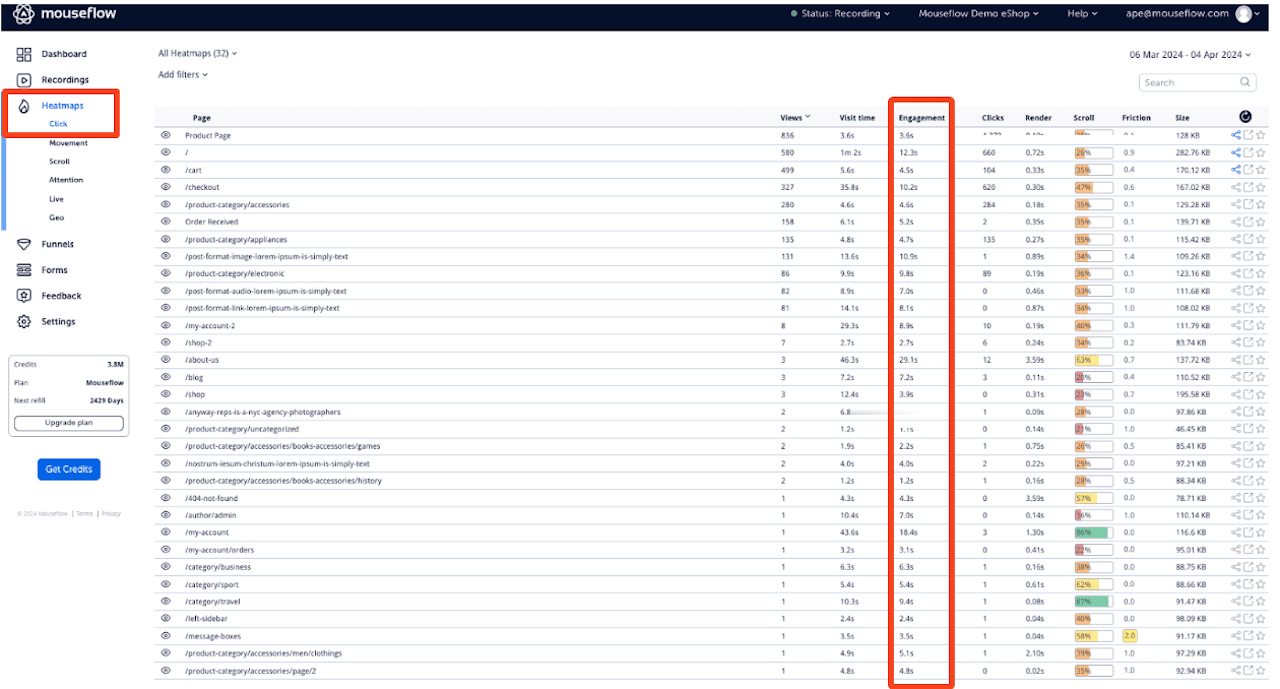
Consideration
If you’re like most people, you spend time carefully researching and comparing options before making a purchase decision. This is the consideration stage of the eCommerce funnel.
Here, customers are weighing the pros and cons of your product versus competitors, looking for the best value and fit for their needs.
They are very close to making a decision, so what you have to do is make the choice (aka your product) effortless for them.
What To Do at This Stage
Most of what you’ll do here is content-related, and options include:
- Product comparisons or bottom-of-the-funnel content (BOFU), where you objectively analyze your offerings against competitor (or your other) products. It can look like this:
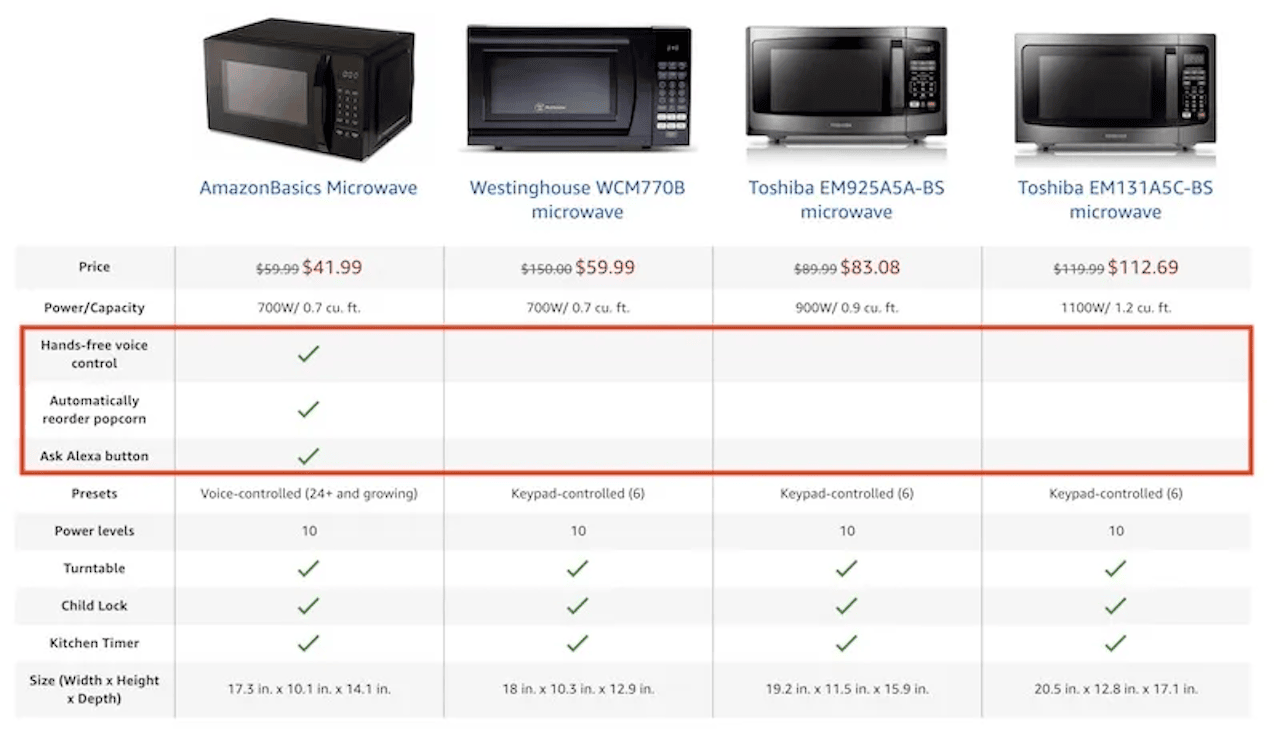
Source: Medium
- Reviews, case studies, and customer stories where you share the success stories of your existing customers. Seeing how others have benefited from your products builds trust and convinces potential customers to go ahead with their purchase.
- Detailed product pages highlighting the unique benefits and differentiating factors for each item. One important tip for product page optimization is to use high-quality images and videos to showcase your products in the best light. See an example:
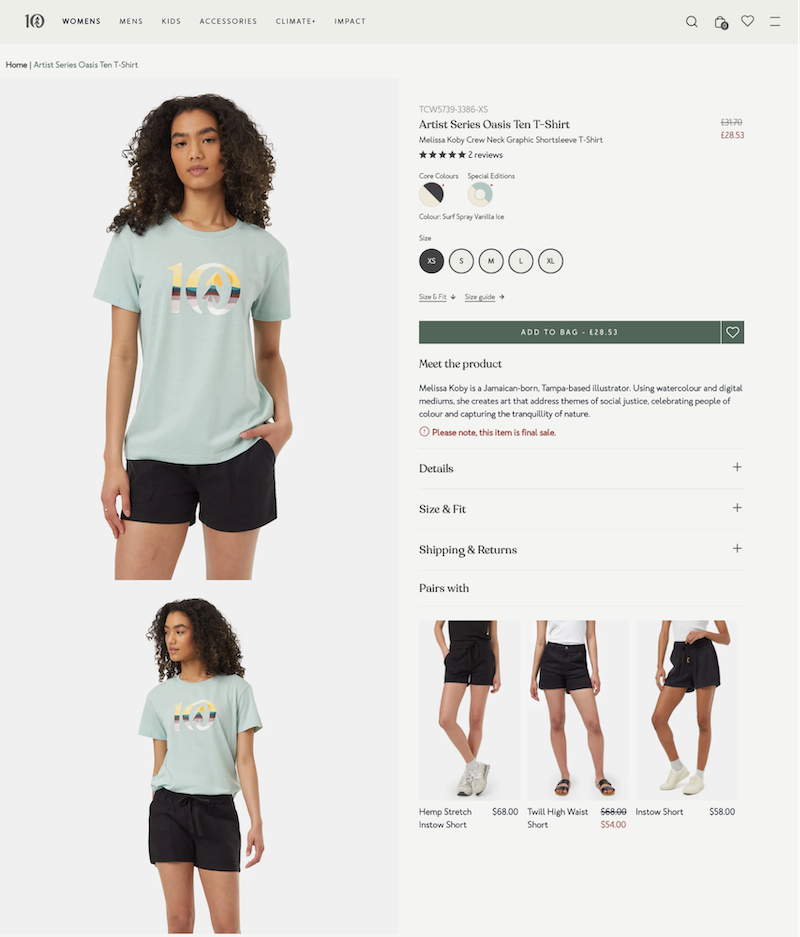
Source: Tentree
KPIs to Track
To measure the success of your consideration stage efforts, look out for KPIs that show increased product research, comparison, and purchase intent. They include:
- Add-to-cart rate (if you’re using Mouseflow, you can create a custom tag so that every add-to-cart event is tracked)
- Product and comparison page views
- Bounce rate: There’s one caveat, though. On its own, the bounce rate doesn’t give context to why visitors bounce. So, balance this metric with Mouseflow’s session replays to understand why they left the page.
Purchase
Purchase, the fourth stage of the eCommerce conversion funnel, is where the fun stuff happens. Here, customers are close to the finish line. They’ve weighed their options and are ready to make a purchase.
Your objective at this stage is to remove any remaining obstacles, overcome objections, and nudge them toward the final “buy” click.
What To Do at This Stage
You’re not running ads or creating content at this point. Everything you do here is geared at removing friction. Examples include improving the checkout process to increase conversions, offering multiple payment options, using clear calls to action (CTAs), offering free shipping and other incentives, providing live chat support, etc.
KPIs to Track
“Success” to an eCommerce brand means completed purchases and revenue. So, your focus should be on conversion rate optimization metrics that reflect this success, like the following:
- Average order value (AOV)
- Cart abandonment rates (if you’re using Mouseflow, you can build a conversion funnel between the checkout and the “thank you page” to track both successful purchases and cart abandonment)
- Friction score which is a metric unique to Mouseflow and is calculated based on friction events like click-errors, click-rage, bounce, mouse-out (when the cursor leaves the tab), speed-browsing, and custom friction.
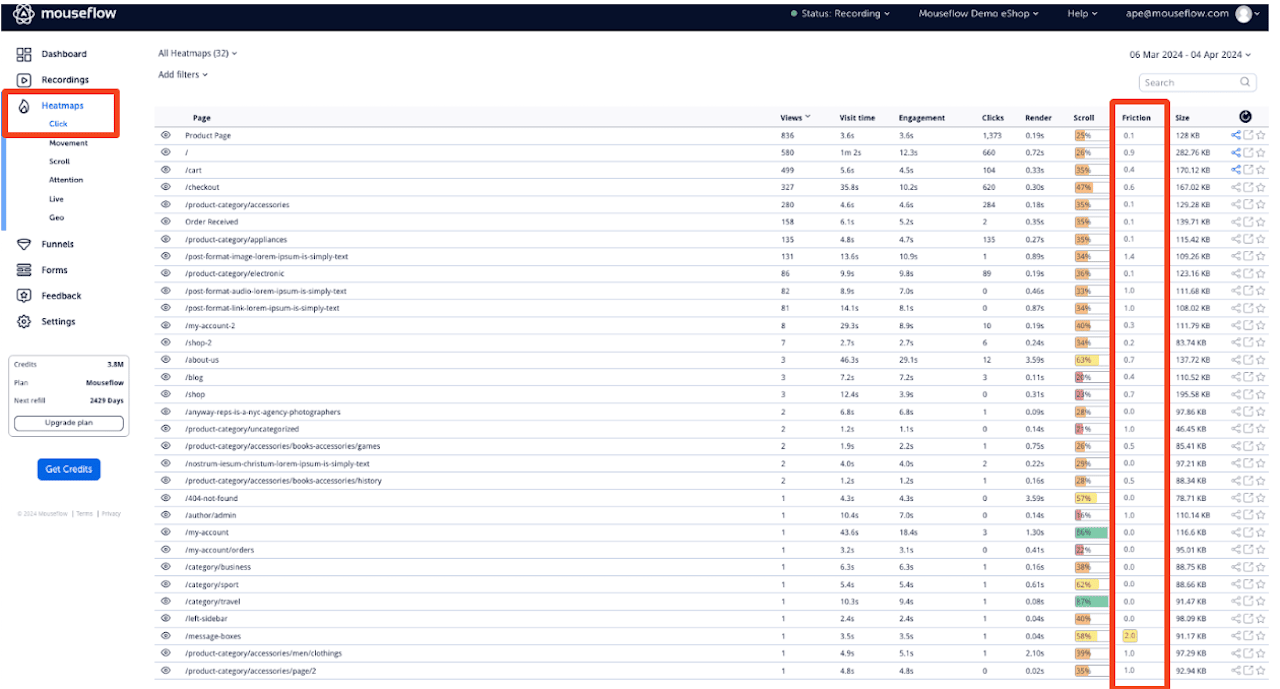
- Conversion rate, the king of all metrics. It’s one of the most important metrics of the overall effectiveness of your funnel, and you can see your conversion rate on Mouseflow and even watch why users did or didn’t convert:
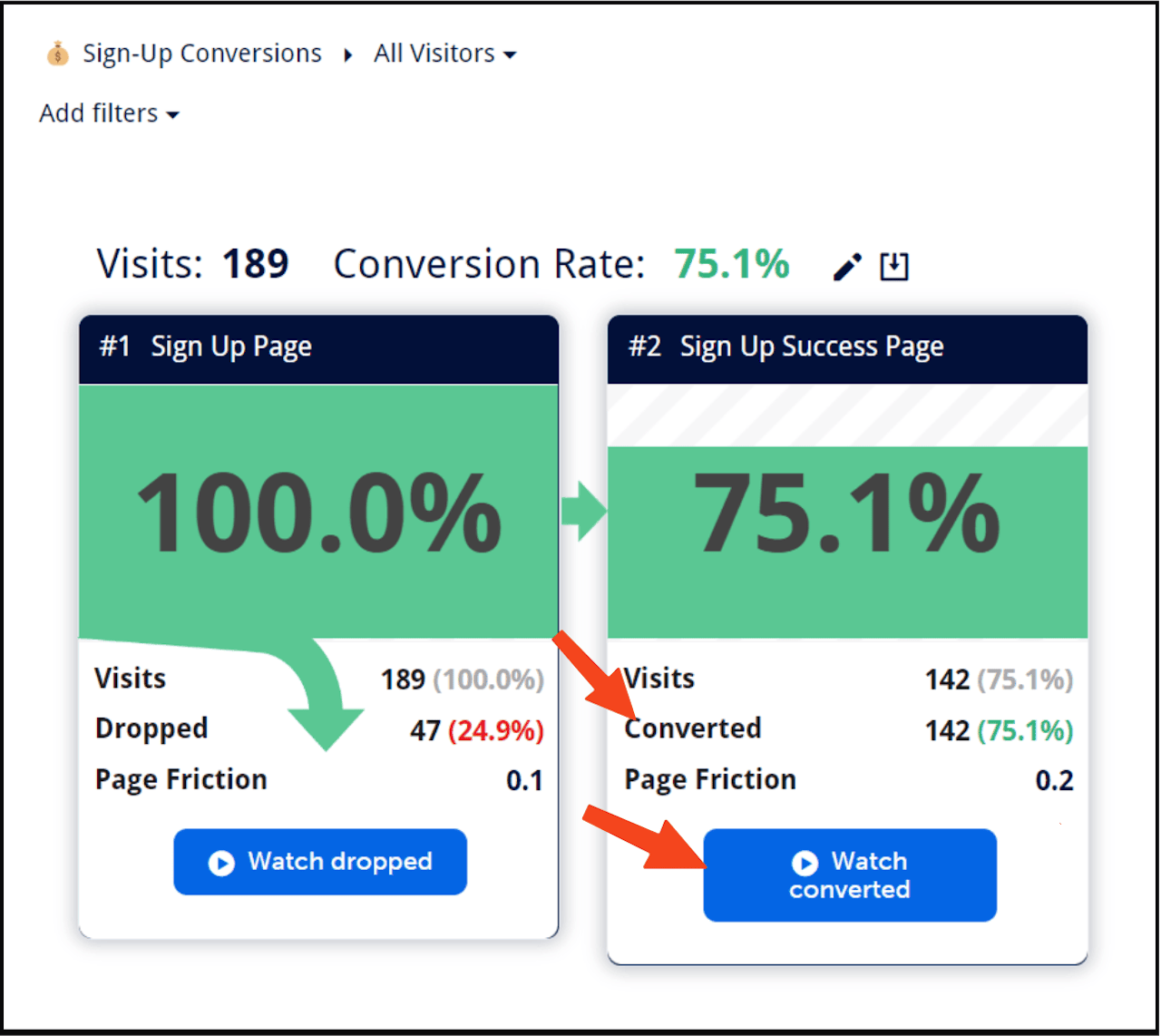
Post-purchase
However, the eCommerce conversion funnel doesn’t end with the purchase. It extends beyond the initial sale to focus on nurturing customer loyalty and encouraging repeat business.
Without the post-purchase stage, you’ll keep losing current customers and spending more (effort and resources) to keep acquiring new ones.
What To Do at This Stage
Some retention strategies you could employ are:
- Loyalty programs: Implement a loyalty program that rewards customers for continued patronage. Offer points, discounts, or exclusive rewards based on purchase history to incentivize repeat purchases and build brand loyalty.
- Referral programs: Encourage satisfied customers to refer their friends and family in exchange for rewards. This lets you tap into their networks and acquire new customers through word-of-mouth.
- Personalized email marketing campaigns: Maintain communication with your customers through personalized email marketing campaigns. Send them thank-you emails with post-purchase recommendations or loyalty program updates. Another stat from the Klaviyo report highlighted earlier states that post-purchase flows have the highest flow open rate (61.68%), and the top 10% of performers have unlocked 4x more purchases with a 2.23% placed order rate.
- Win-back campaigns for abandoned carts: For customers who have abandoned their carts or become inactive, launch targeted win-back campaigns to re-engage them. Offer incentives like discount codes or free shipping to entice them or highlight new products/features to entice them back. Klaviyo also reports that abandoned cart flows drive the highest average revenue per recipient (RPR) in eCommerce (with an average placed order rate of $3.65)
- Request feedback: Get your customers’ thoughts on your products and customer service so you can know where to improve. Remember, you can use Mouseflow’s feedback feature to do this.
KPIs to Track
You should concentrate on KPIs that show increased loyalty, advocacy, and long-term revenue, such as customer lifetime value (CLV), repeat purchase rate, and referral rate.
Real eCommerce Funnel Examples in Action
Custom Neon
Custom Neon is a site that helps you design and create beautiful LED neon signs. Their sales funnel starts with TOFU content marketing (both blog posts and videos) and social media marketing, like this article on business signage statistics and signage placement visibility.
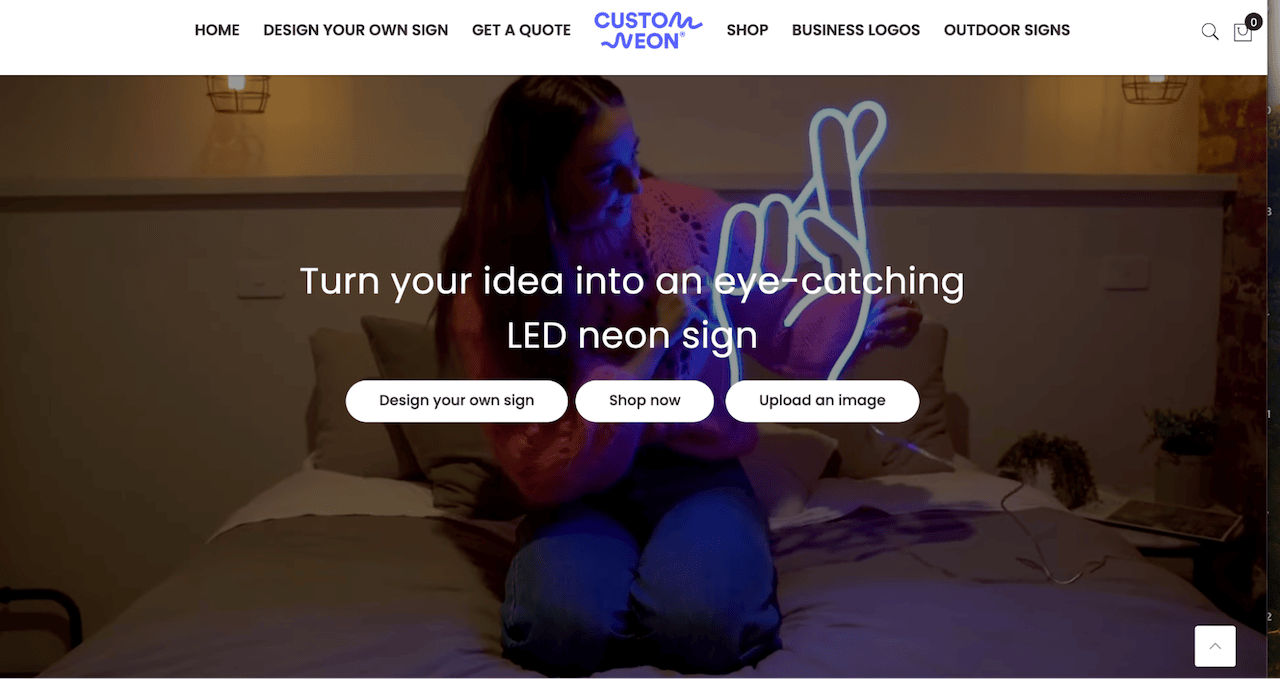
The result of implementing this strategy? A 30% increase in social media engagement and a 25% increase in web traffic within the first quarter.
To nurture interest and build trust, they prominently display positive customer reviews and testimonials on their website and social media channels like the ones below:
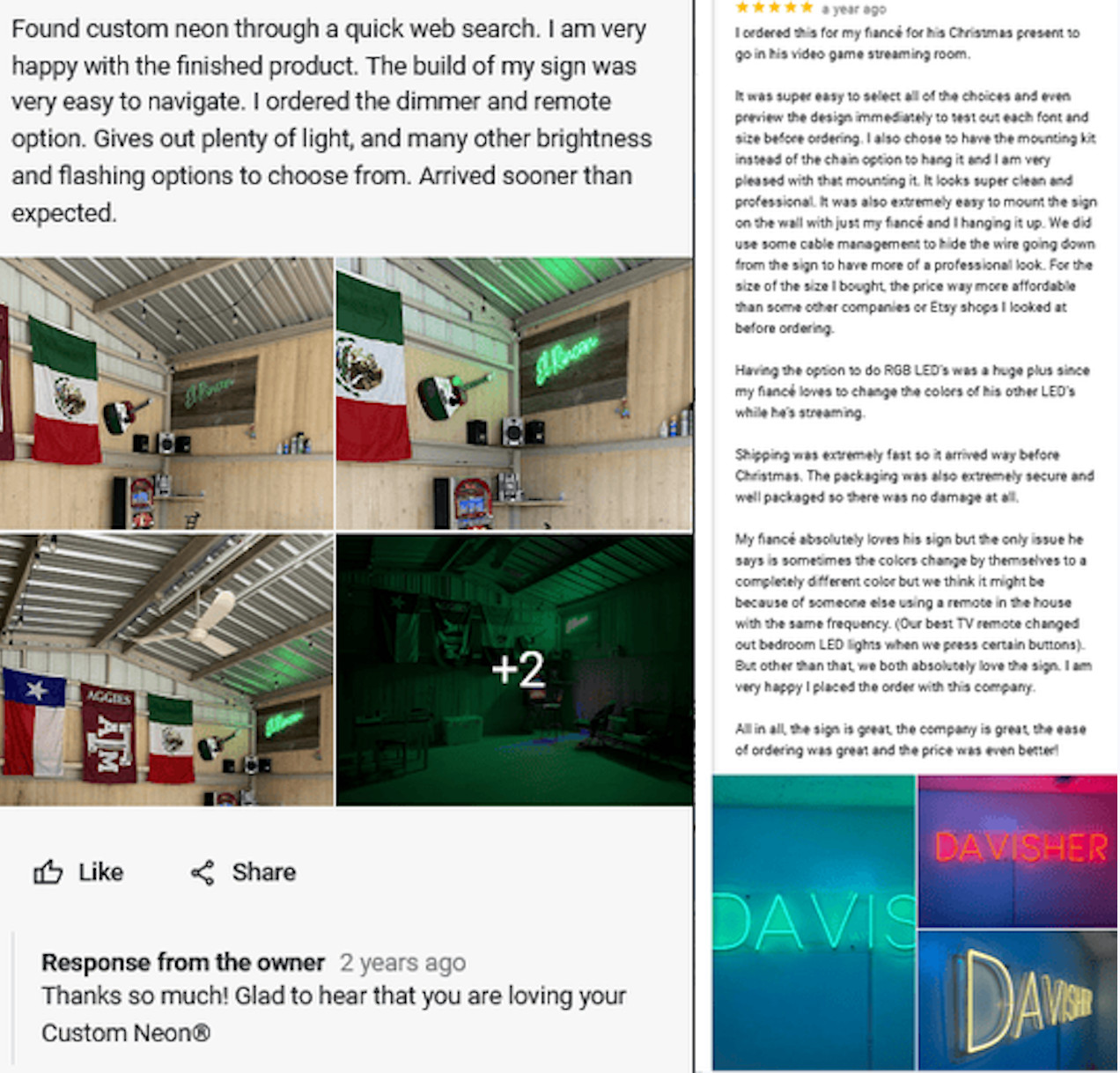
They also have a “create your custom neon” option on multiple pages, inspiring visitors to create their signage.
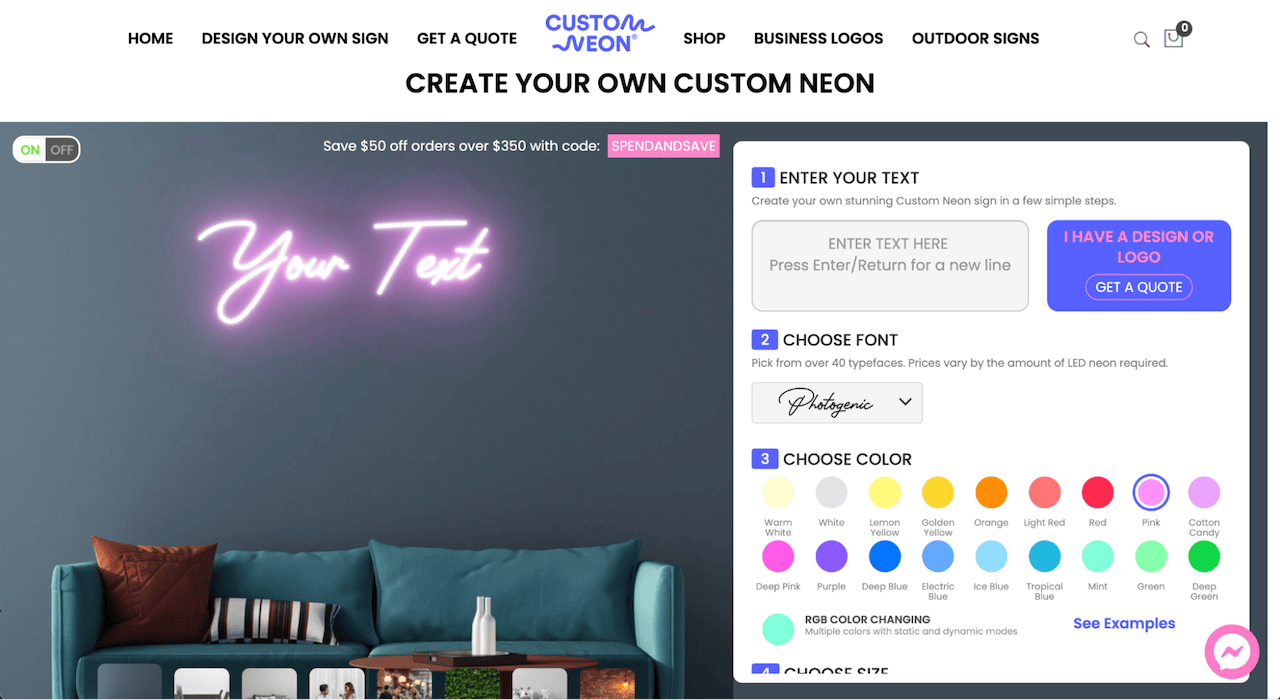
The inclusion of customer reviews and the interactive tool increased the time spent on the site by 15% and decreased the bounce rate by 10%.
For the consideration stage, they collaborate with other blogs to have their product mentioned (displayed) in their posts, and they create detailed descriptions and comparison charts to highlight their products’ unique features and benefits. They also encourage customers to share their experience with their products on social media and then feature this content on their website (with the customer’s permission):
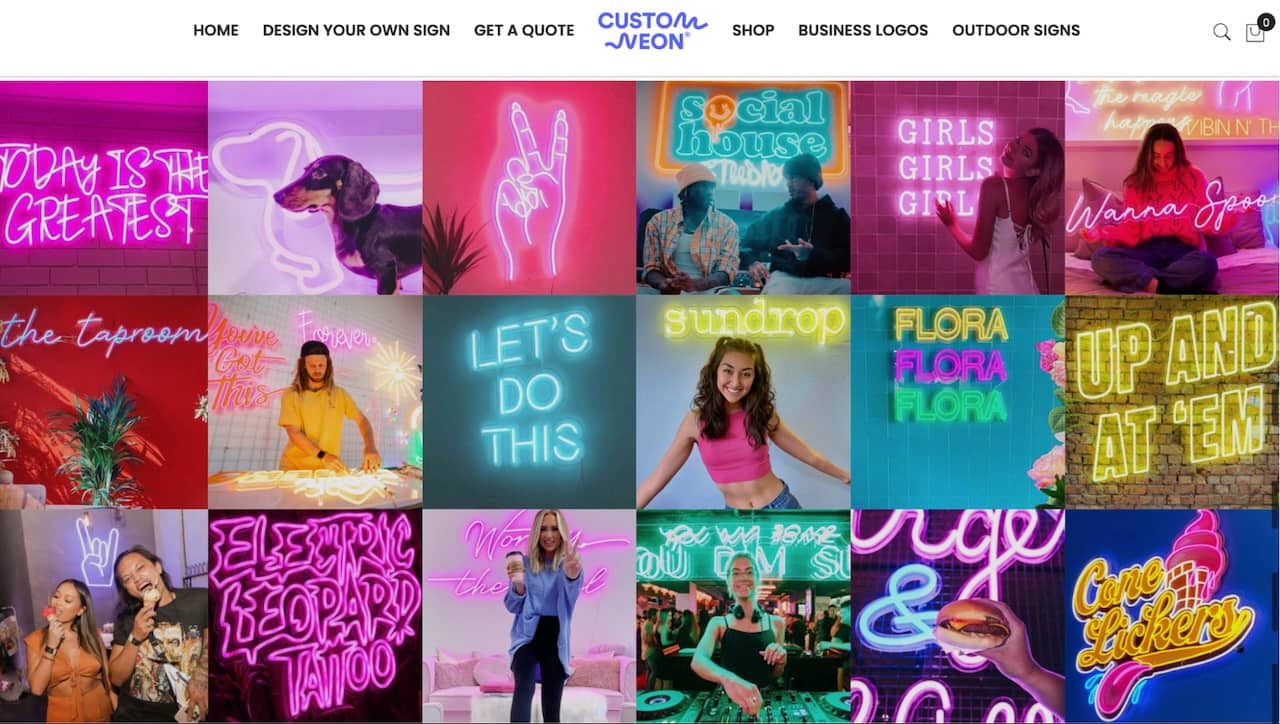
By using UGC and clear value propositions, they saw a 20% increase in conversion rates.
For purchase, they optimize their checkout process to minimize clicks and distractions. This includes a one-step checkout and offering BNPL (buy now pay later) options. Also, they continuously test different design and content variations to determine the most effective layout. During one such test, they found that a vertical swipe-through product page design significantly improved user engagement.
These optimizations led to a 25% decrease in cart abandonment rates and a 30% increase in completed purchases.
Finally, they follow up by sending personalized thank-you emails and requesting feedback:
They offer special discounts for repeat customers to encourage repeat purchases:
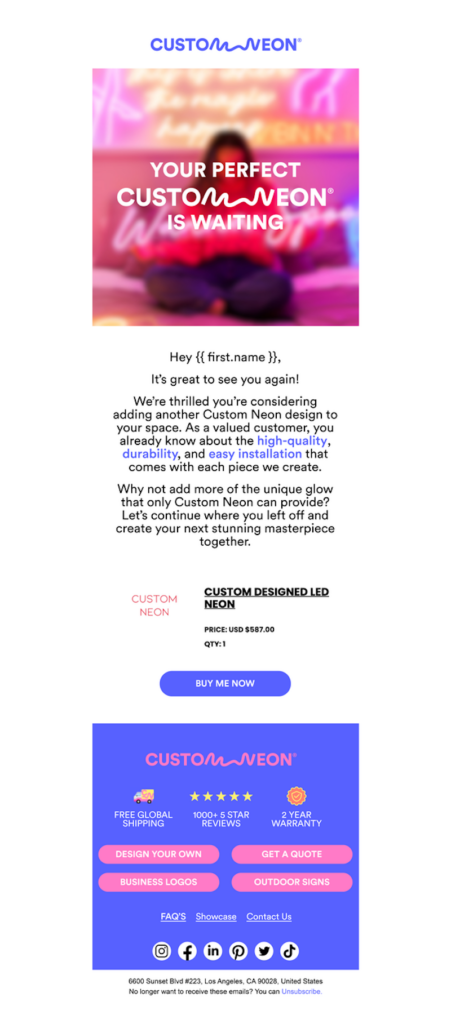
And they include a thank-you card in the packaging to enhance the post-purchase experience. This card also invites the customer to share their images on Instagram:
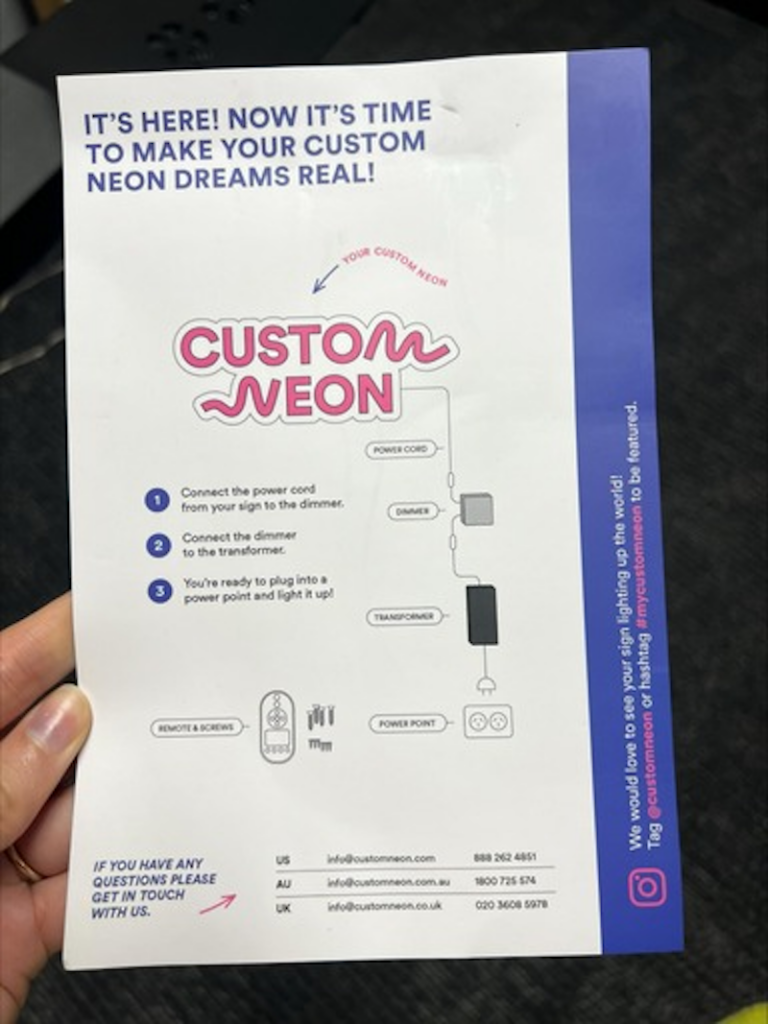
All of these post-purchase efforts resulted in a 20% increase in repeat purchase rates and higher customer lifetime value.
Tank Retailer
Tank Retailer sells storage tanks from top brands. One of their products is a water tank used by firefighters and frequently purchased by the local, state, and federal governments.
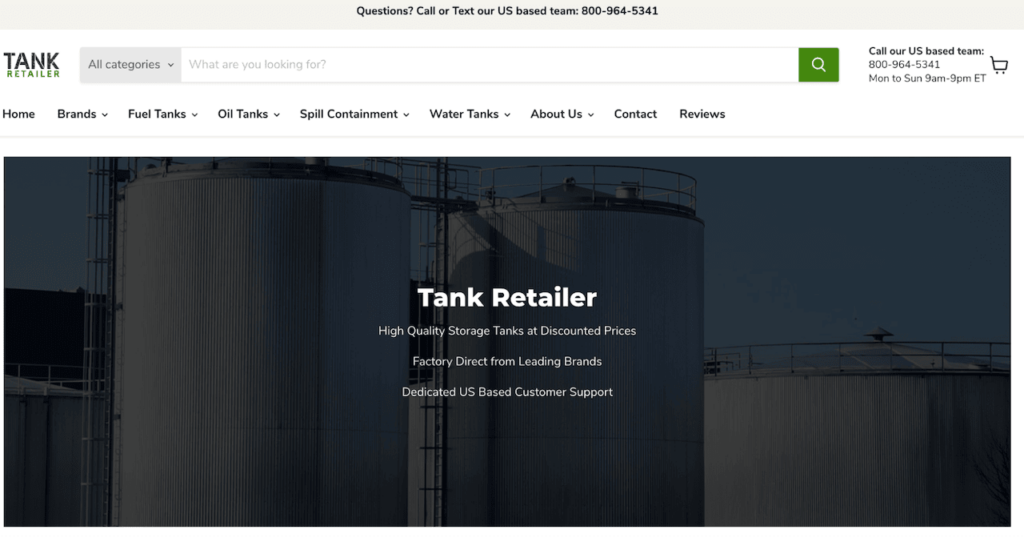
So, for this product’s funnel, they first produced an in-depth guide to wildfire statistics by state:
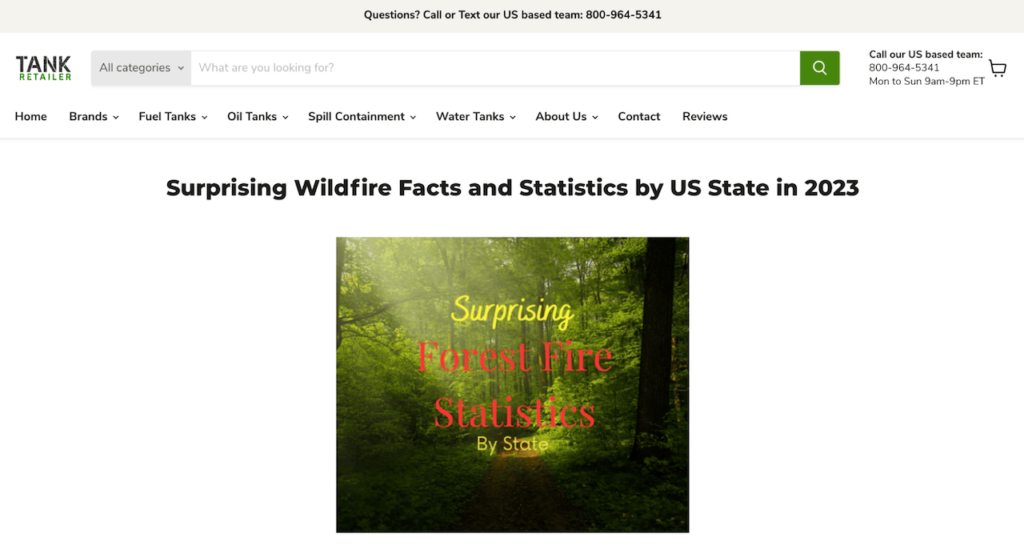
They used this TOFU content to call people’s attention to the problem of wildfires, which their business helps solve.
Moving forward, they ran Google shopping ads for highly specific keywords with high purchasing intent (which converted at a cost of $6.90 per conversion compared with the average Google ads cost of $205.10 per conversion):

They also ran remarketing ads to advertise to people who had already engaged with their informational content and were ready to make a buying decision.
To aid consideration, they created more blog posts with fire-fighters specific content to nurture interest, for example, a post evaluating water tanks based on the reader’s needs and budget. See how some of their pieces resulted in the visitor reaching the checkout page:
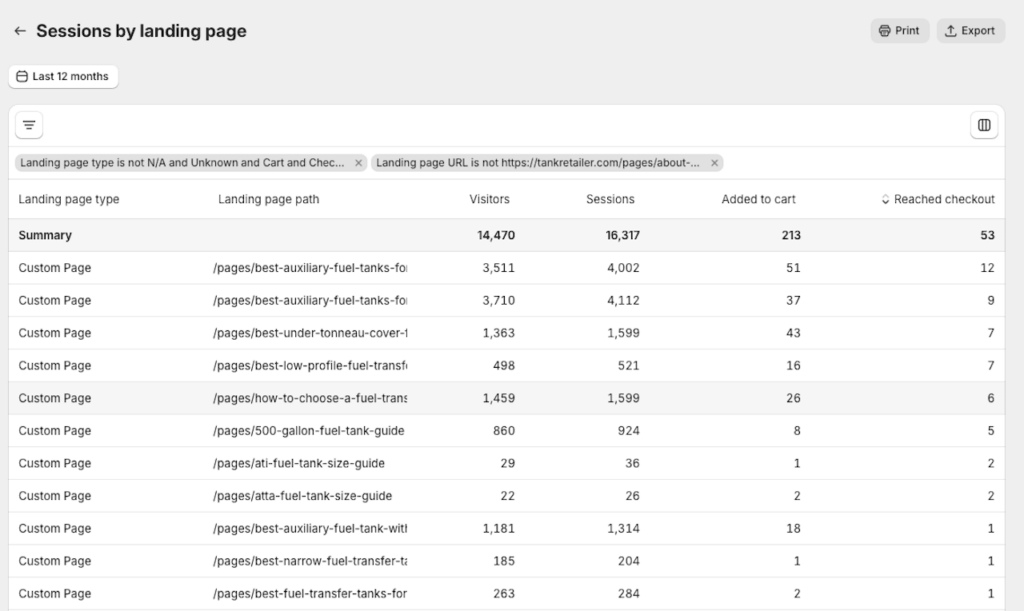
For post-purchase, Lou Haverty, owner of Tank Retailer, said it’s “entirely focused around customer service. I really try to make my business stand out by going above and beyond in customer service. In the case of the water tank products, my customers frequently require outlets that are compatible with their existing equipment. This is a great opportunity to call the customer and make sure we are matching them up with the correct sizes. In situations where the customer may need an additional product, this is also a great opportunity to cross sell additional products.”
Track and Optimize Your Sales Funnel With Mouseflow
Tracking your eCommerce conversion funnel is very important as it allows you to identify bottlenecks, optimize your marketing efforts, and ultimately increase conversions.
Remember, you can track and analyze your funnel with Mouseflow. Just set up your entire website funnel, like the product page -> cart -> checkout or category page -> cart -> checkout, and monitor each step for visits, drops, conversion, and friction with our conversion rate optimization tool. Mouseflow also helps to understand the quality of the traffic that your ads bring to the website.
This is great for understanding how customers move through your sales process and where they are dropping off.
